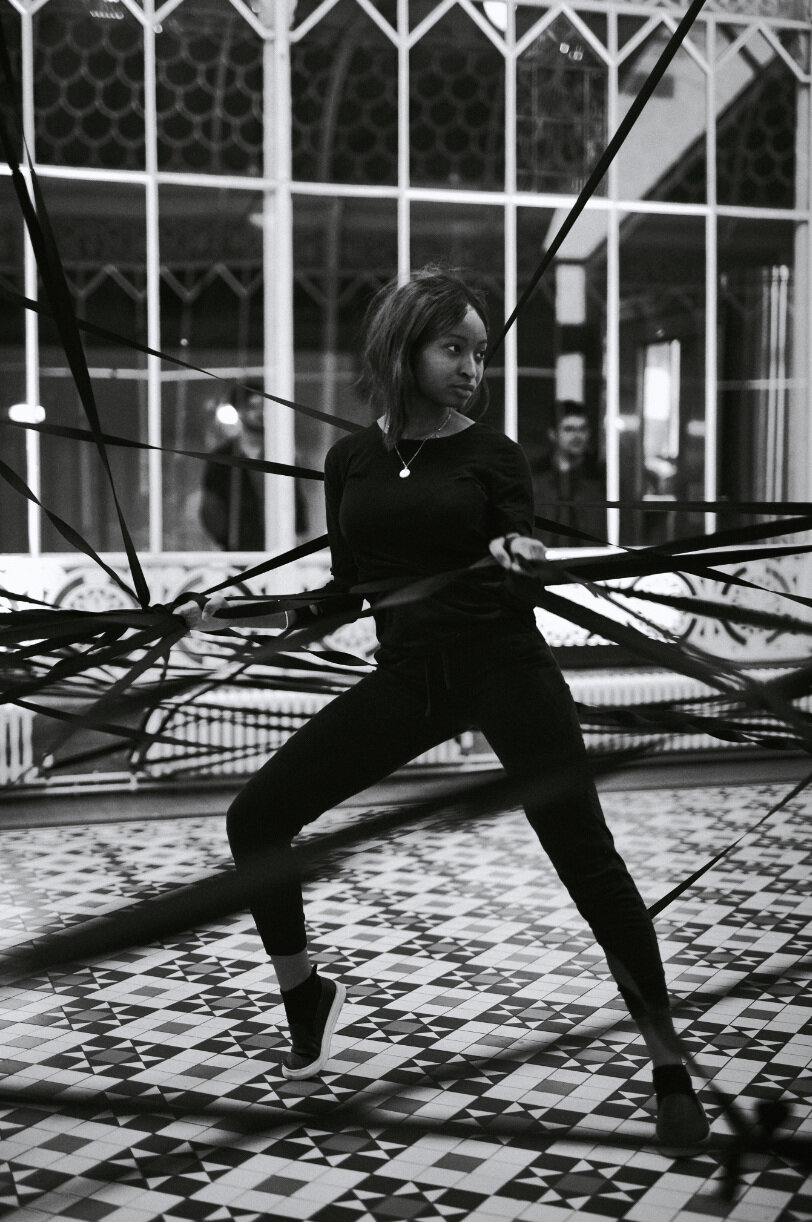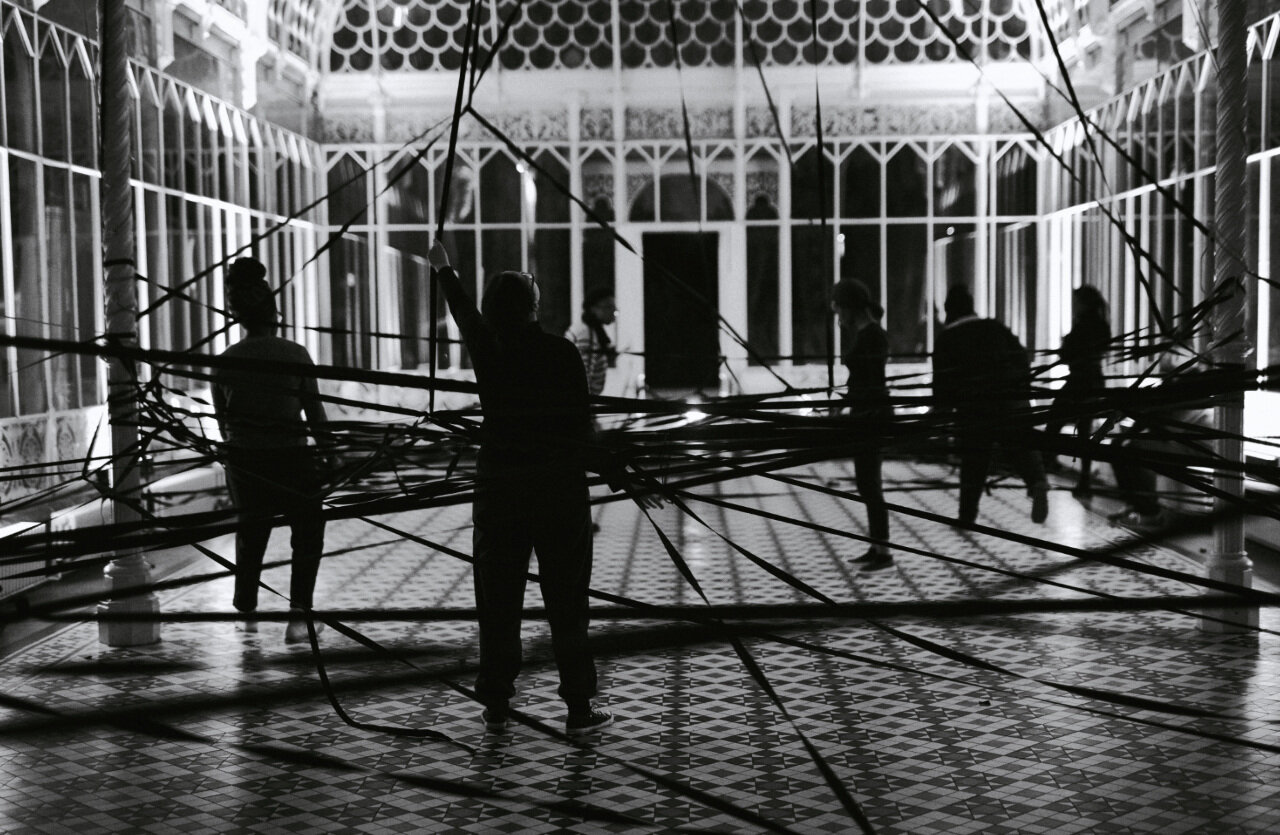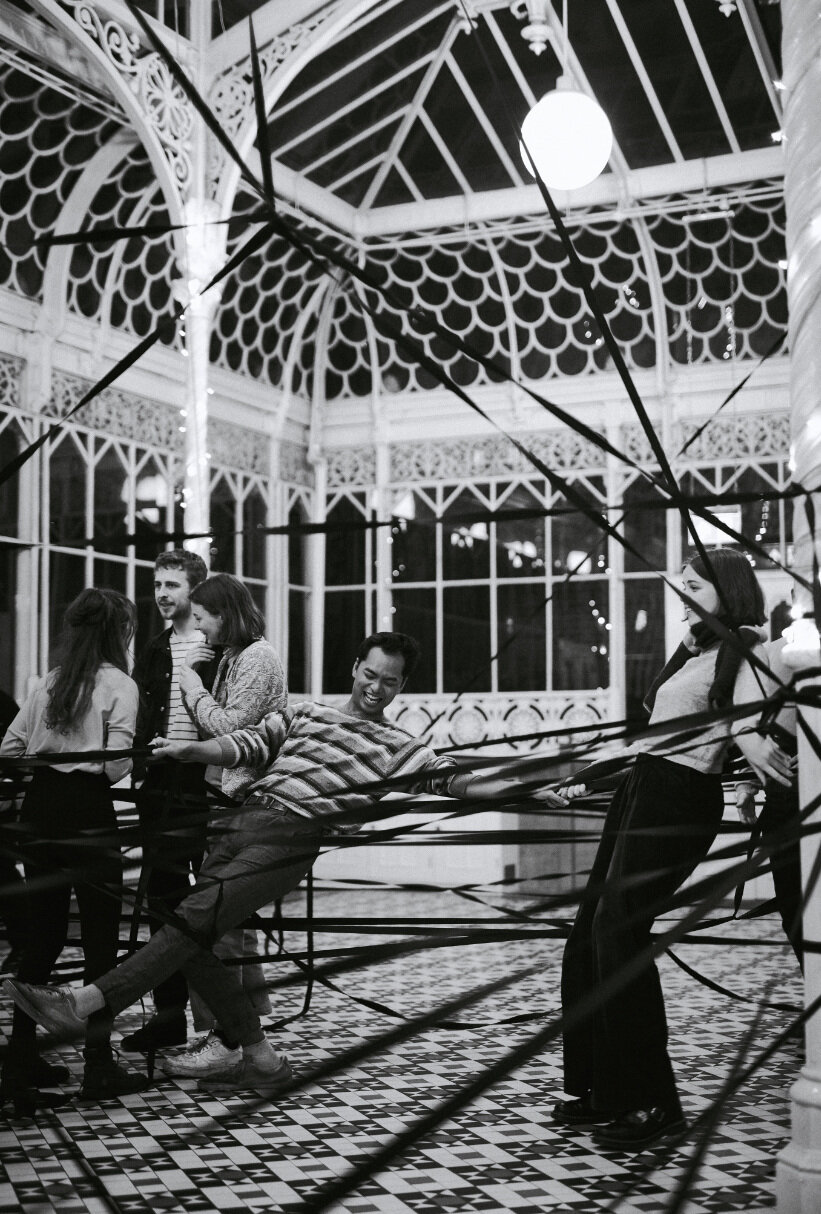Jose Campos’ Studio Lenca: Creating Salvadoreño Visibility in the UK
How do you connect to your homeland when isolated from it? Jose Campos is an Salvadoran artist-teacher based in London and the neighboring seaside town of Margate who works under the umbrella Studio Lenca, a creative confluence of photography, performance, and pedagogy. His practice amplifies the history and culture of his native El Salvador through contemporary portraiture and social practice-inspired installations that confront who galleries are designed to serve and who they neglect.
We first met in 2000 as students at an arts high school in San Francisco—where he studied dance and I visual art—and reconnected in London in 2016. Jose’s practice has evolved from elegant, ephemeral performances into vibrant visuals of Latinidad, self-portraits draped with tapestries inspired by Salvadoreño iconography. We spoke in March, as the COVID-19 pandemic was gaining momentum, and again in June, as the United Kingdom was reopening. Our conversation explores how the arts provided a place of refuge as a child adjusting to the United States and how he’s using his creative practice to reconnect to his heritage.
Melissa Saenz Gordon: How did you come to name your practice Studio Lenca?
Jose Campos: Lenca refers to my ancestors of my native El Salvador. I like the word “studio” because it refers to a space that is constantly shifting—it could be a scientific lab, an art studio, a fashion studio, or a photography studio—it’s this space to experiment with. What's nice about Studio Lenca is that it removes me from the equation and doesn't center me as the “almighty artist.” A studio can be a collective voice, so from the start, Studio Lenca is saying: This is a space for possibility.
What inspired you to pursue the arts?
I was born in La Paz, El Salvador during the late 1980s, and like many, I had to flee the country because of the violent civil war. My mom moved us to San Francisco, California, a very conservative time in American history with the Bush Administration, and we were undocumented illegal aliens in that context [Interviewer’s note: the artist used illegal aliens to amplify the hideous nature of the term and social climate of the time]. That was difficult because I was finding out I was queer and [undocumented] and felt disenfranchised in every way. Luckily there was a free arts provision in my community that I lived in. And through that, I became involved in the arts. My family didn't know anything about the arts, and they weren't really interested, we were just trying to survive really. I was growing up in a very conservative and strict Salvadoran household and needed space to be myself, and dance allowed me to be that person.
Eventually I went to the School of the Arts [high school] in San Francisco, which offered an opportunity to engage in the arts in a real-world setting. I remember when we visited an artist or to see a performance, and those performances were really shocking, and that discomfort led to change and learning.
Was there a performance in particular that resonated with you?
We watched the Stephen Petronio Company, I must have been 14 or 15, and at that point, I had only studied classical ballet, and I remember seeing this Latino dancer. First of all, he was dancing in his underwear and he had boxing gloves on, and someone might've been throwing water on him, and I thought, how is this dance? You know, how is that guy a dancer? It was just so shocking, but now as an adult, I really appreciate that. It was that shock factor that really made learning possible.
Can you discuss some of your recent work?
My most recent work is a series called Los Historiantes. It's a photographic series of portraits, mostly of men, and I see it as performance as well, as the process is quite performative. I've been collecting materials to create these costumes. I feel completely isolated because there's no access to Salvadoreño culture here in the UK, so I borrow from West African and Muslim cultures which are accessible here. What's interesting is when I borrow materials from these cultures, they share similar histories of colonization, and this work is revealing that we're sort of the same.
What draws you to Los Historiantes?
Historiantes are folkloric dancers in El Salvador. Conquistadores introduced this dance to the native people, so they’ve made this tradition that represents this moment of mixing. Their costumes refer to things like religion and pre-Columbian traditions and they carry corvos, long, curved knives that have to do with agricultural traditions. I see them as these living archives of this moment of colonization. There are different versions of Historiantes throughout Central America and South America because a lot of the histories are quite similar, but they're an iconic Salvadoran thing that I've latched on to, because this intergenerational trauma is still relevant today, during this post-colonial time that we're experiencing.
When I visited El Salvador with my family when I was young, I would see Los Historiantes, they would walk around the neighborhood and perform in front of your house. I want to make work that is visibly Salvadoreño so that other Salvadorans can see themselves in the work, because I never had that really, you know, I've never been to an institution, to a gallery and seen a portrait of a Salvadoreño, so I gravitate towards these icons of El Salvador and it's like presenting it for everyone else.
How does your work speak to being a Salvadoreño artist in the UK?
When I moved to the UK, I felt this pressure had been lifted. Often people don't know what I am, and think that I look Iranian or something else. So they don't have these assumptions of what a Latino person is, and that's really powerful because you can just then be yourself, you know, that pressure isn't there.
But I do have to say, it's lonely being Latino in the UK—there's no food, there are no Latin people. This work has really connected me to people in El Salvador and Salvadoreño artists who I never thought would exist growing up, you know? So making these things happen is a way of being visibly Latino, being visibly Salvadorian, and being visible online because I do feel isolated, I do miss El Salvador and the Mission [District] in San Francisco so much, and I think that that's why I'm making the work that I'm making because I feel like I'm a part of a community. I found that this work has connected me to Salvadorans all around the world. Slowly I'm learning about artists and artist networks that exist. That's really incredible because growing up, I never thought that I'd have discussions with other Salvadoreño artists.
There's an amazing network called Y.ES Contemporary, and it's a coalition of artists in El Salvador and around the world. Again, I'd never imagined that I'd be a part of a Salvadoreño network of artists. I've always just been an artist, you know, and now I have people that look like me, that sound like me, that have similar histories, and that's really comforting.



Like many artists, you have a day-job. Can you speak to how being an educator informs your creative practice?
I know it sounds cheesy, but working with high school-age students is like a direct link to society, and as an artist, that's what I'm interested in. I often refer to myself as an artist-teacher, not just an artist or a teacher, because I think those two things are in such dialogue, one doesn't exist without the other.
I got really inspired by Paulo Freire who talks about critical pedagogy and revisiting the hierarchies between teacher and student in the classroom. In 2019, I created a collective work with my students called Mile of String (2019). It was commissioned by the Horniman Museum in London, which is a small, natural history museum that’s rooted in a very colonial past. Essentially it was a group of five students and myself, and we took tons of black elastic and basically made it difficult for people to access that space. It was important for me that we all got paid equally, because I didn't see that in my background. I always say to the students that you can have a career in art.
What was something you noticed about this performance?
One of the things I observed was that the students were sort of doing what you're not meant to do—run around, scream, throw themselves on the floor—it was incredible to see how much power they had in that space; often students are quiet, timid, and feel like they shouldn't be there, but the opposite was happening. These students were also local to the Horniman, but some had never been there, and most of them felt like it wasn't a space for them; they’re working-class students from underrepresented backgrounds. It’s problematic for children and young people to feel that way because they're the future. But what's happening is that students from certain communities are already being excluded from day one, so how do we expect to see art from these communities if they're already being asked not to participate?
When we spoke last the COVID-19 pandemic had just forced society to shut down and you mentioned not feeling safe to go to your studio. What were some of the strategies and projects that came out of this experience?
I can't believe there was a time when I was scared to go to my studio, that seems so far away now. I found that I had a lot of time, so I started painting in the kitchen. In collaboration with another teacher, I worked on an exhibition called Unknown Learning. It ended up being an exhibition that no one could attend—hosting it would have been completely illegal—and we wanted to explore this moment of teaching remotely through materials, and worked with materials that we just had because we couldn't go to conventional art shops.
I made a piece on a duvet that says “School Kills Artists” and on the back it said, “School Makes Artists”, and often as an artist-teacher, you sit on either side. It's like a scale, and you're either working with this idea of, “I want my students to be artists” or the idea “I want them to do well on this exam.” In a way, both ideologies are in battle with each other. If you think about a duvet, it's such a personal material, it’s something that you sleep with. This duvet creates a wall where you have to be on one side or another.
That's exactly what it's like as a teacher, [you often question] what values do you hold? They're so influenced by your own personal trajectory. How were you taught? What do you value, what was your family like? You know, your class, your age, or race, all of these things position you on that scale. But also the duvet hangs in a way where you can transgress the boundary, where you can choose to be on one side or another, or in between.
You were planning to travel back to El Salvador in August for a residency, is that still happening?
I applied for funding called Developing Your Creative Practice with the Arts Council of England. All of a sudden they just told us that the funding was no longer available. It's very showing of what's to come in the arts, and not nurturing emerging artists is also going to have lasting effects down the line. The arts have always been seen as a luxury, isn't it? When it's literally getting people through this pandemic and catering to their mental health.
Given the circumstances, what are your next steps as an artist?
The next thing I want to do is create a series of portraits called "Marica" which means sissy in Spanish. It's a derogatory term I heard because Tíos would call me that at family events. Growing up Salvadoreño is very much about being macho. I think that there's a change happening amongst Latino men in El Salvador because of the internet, but I don't think that it's in the public narrative, so I'm interested in capturing that moment and making it more visible. I plan to go to El Salvador and take a series of portraits that subverts the masculine Latino identity. A series that embodies an alternative masculine identity in the style of the National Portrait Gallery, but in El Salvador. Even if I don't get the funding, I'd love to do it, I just have to get myself to El Salvador.
Jose Campos has a MA Arts & Learning from Goldsmiths University of London, Art & Design PGCE from Goldsmiths University of London, and a MA Contemporary Dance from the London Contemporary Dance School. He’s been an artist-in-residence at the South London Gallery and has presented at Goldsmiths University, the Horniman Museum, and the Embassy of El Salvador in the United Kingdom. His work will be featured in the 2020 virtual SWAB Barcelona Contemporary Art Fair, and represented by La Única gallery.
Melissa Saenz Gordon is a cultural worker, editor, and photographer based in Ridgewood, Queens, who works to illuminate the achievements and legacy of artists of color and marginalized voices through audio and visual storytelling. She is the co-founder of Soft Power Vote, an independent civic engagement initiative centered on New York City politics.







